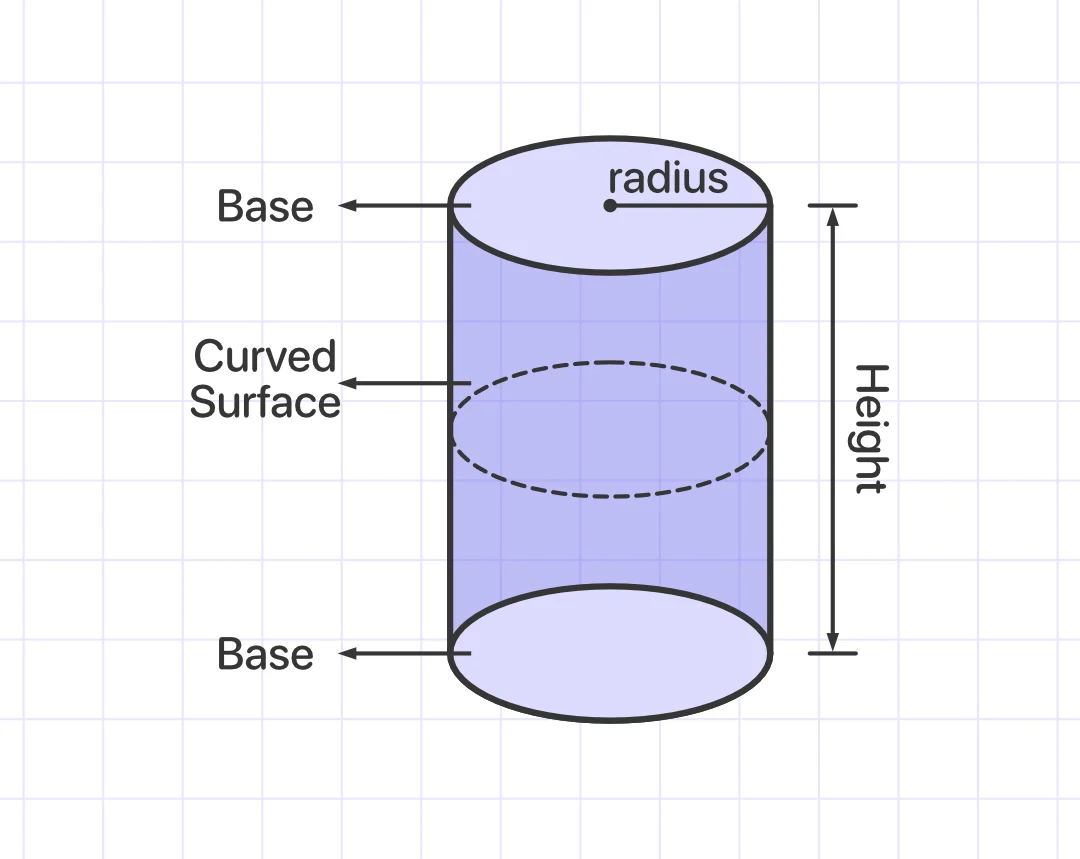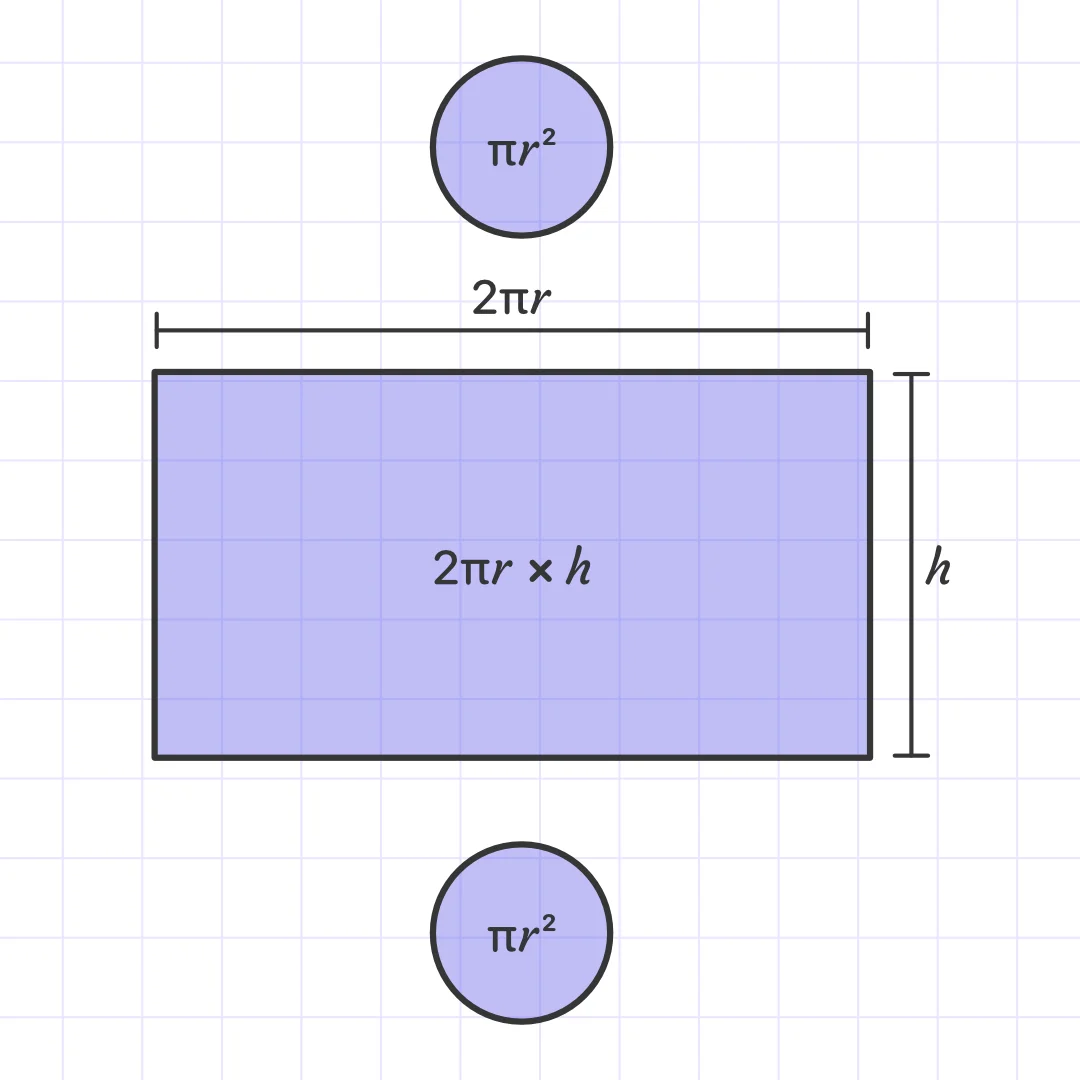MathMaster Blog
The overall surface area of a cylinder includes the area of the curving surface as well as the area of a cylinder's two circle-shaped bases.
Surface area is measured in square millimeters, square inches, square feet, and other similar units.

So, the total surface area of a cylinder = 2πr(r + h), where:
r = radius of the cylinder
h = height of the cylinder

Example 1:
Calculate the area of a cylinder with a radius of 5 inches and a height of 15 inches. Take the value of pi as 3.14.
Solution:
Radius, r = 5 in
Height of the cylinder, h = 15 in
The surface area of the cylinder is:
A = 2πr(r+h)
= 2π × 5 × (5 + 15)
= 2π × 5 × 20
= 2 × 3.14 × 5 × 20
= 628
Answer: The surface area of the cylinder is 628 square inches.
Example 2:
The area of the cylinder is 500 cm² and its height is 10 cm. Find the radius of its base.
Solution:
The lateral surface area is A =2πrh. The curved surface area is A = 500 cm² and its height is 10 cm, hence:
A = 2πrh
500 = 2 × 3.14 × r × 10
500 = 62.8r
r = 500/62.8
= 7.96
Answer: The radius of the base is 7.96.